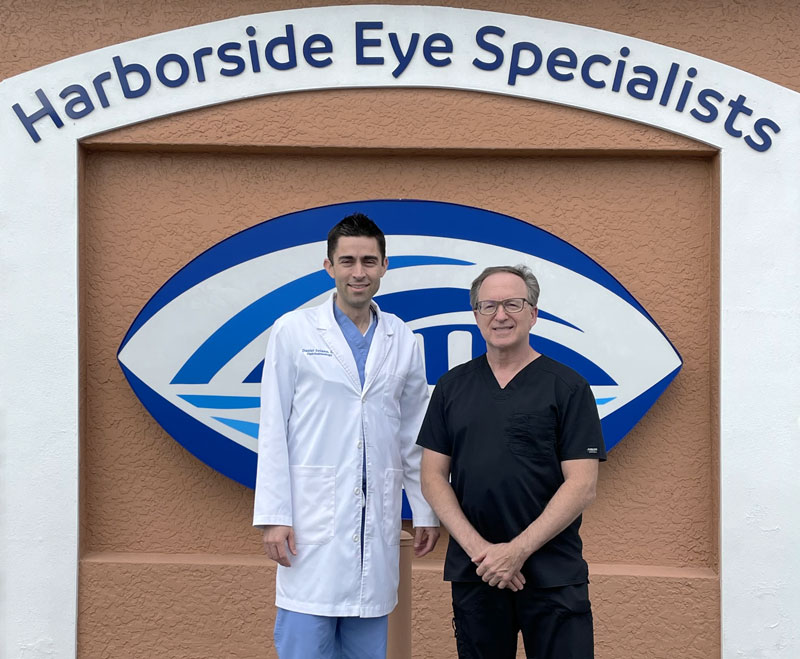Patient Portal
Welcome to Harborside Eye Specialists! The entire staff is delighted to have you as a patient. Your initial visit may take 1-2 hours, depending on which tests or procedures will be performed.
Dilation of your eyes will probably be necessary for the examination. Therefore, it’s a good idea NOT to plan on driving immediately after the appointment. Since your eyes may be sensitive to light, please plan on bringing your dark glasses, or the staff will gladly provide you with a disposable sunshield to wear when you leave.
Harborside Eye Specialists is a Medicare Participating facility. The center is also a provider for several other commercial insurances. Prior to your visit, please inquire about your insurance plan.
As a courtesy, the professional staff will file your insurance claim for your visit, even if Harborside Eye Specialists does not participate in the plan. All deductibles, co-payments, and non-participating insurance plan fees are due at the time of service. The office accepts cash, checks, Visa, Mastercard, and Discover.

Dr. Solano and Dr. Zusman
When you should see your Ophthalmologist
The frequency of performing eye screening exams depends on the patient’s age and risk of having an eye disorder. The American Academy of Ophthalmology recommends the following guidelines:
- Before age 5: Toddlers should be screened for common childhood problems; such as crossed eye, lazy eye, nearsightedness, and farsightedness
- Age 20-29: At least once during this period
- Age 30-39: At least twice during this period
- Age 40: Comprehensive ophthalmic exam for all adults- future frequency of exams determined from this exam
- Age 65 and over: Every one to two years
See an Ophthalmologist promptly if you experience:
- Visual changes or eye pain
- Flashes of light
- Floaters (spots) or ghost-like images
- Distorted or wavy lines
- Foreign body
- Chemical injury
- Red eyes
- Dry eyes
- Itching or burning
Individuals at higher risk for eye disease should be examined more often:
- Diabetics (annually)
- African Americans over 40 (glaucoma)
- History of high blood pressure
- Family history of eye disease, or history of
eye injury
